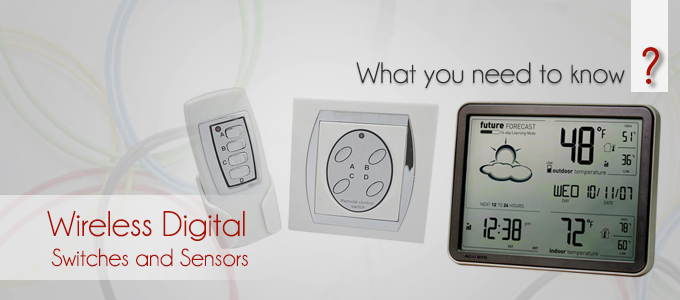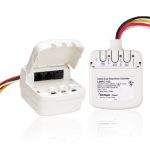 Obviously wireless technology has been broadly acknowledged and grasped in the industrial group. New and advancing standards, accessibility of an extensive variety of gadgets, and the demonstrated performance of an expansive installed base each one serve as affirmation to their adequacy.
Obviously wireless technology has been broadly acknowledged and grasped in the industrial group. New and advancing standards, accessibility of an extensive variety of gadgets, and the demonstrated performance of an expansive installed base each one serve as affirmation to their adequacy.
Nonetheless, while there is an extensive choice of gadgets for monitoring, transmitting, receiving and processing consistently variable parameters, (such as flow, temperature, pressure et al), there has been minimal accessible in the method for wireless devices for generating and receiving simple “on-off” signals for machine start/stop control, presence/position sensing, counting, alarm signaling, process control, and other desired digital inputs.
This is currently changing with the improvement and presentation of various powerful, reliable digital contact and non-contact switches, sensors and related accessories.
Accessible and developing control parts include:
- Mechanical limit switches
- Contact-type presence sensing switches
- Non-contact magnetic sensors
- Non-contact inductive sensors
- Photo-optical sensors
- Pull-wire switches
- Pushbutton switches
- Momentary and maintained selector switches
- Key-operated switches
- Foot switches
- Door handle systems with integral push button control functions
The acknowledgment of these new wireless digital control inputs has been the aftereffect of various remarkable specialized improvements. Among these are:
- The design and production of robust, energy harvesting mechanisms (energy generators) capable of meeting the duty cycle and life expectancy requirements typically encountered in industrial applications. Let us assume that a permanent magnet is moved through an electrical coil by the motion of the switch actuator. This creates sufficient electrical energy to transmit an encrypted, wireless telegram to a “paired” receiver within the signal’s range. These generators, designed with mechanical life expectancies in excess of 1 million operations, eliminate the need for a battery power source in a variety of mechanically-actuated switches (e.g. limit, pull-wire, pushbutton, selector, key-operated, and foot switches).
- The design of transmitter electronics that require little power and permit bidirectional communications between transmitters and receivers. Transmission protocols feature short telegrams for minimal transmission-time durations.
- The use of solar energy or high energy-density, long-life batteries (where mechanical energy generators are not an option).
- The application and use of noise-immune wireless frequencies (e.g. 868 MHz, 915 MHz, and 2.4 GHz) that are Nationally- or Globally-accepted Standards in industrial control applications.
- The design of field strength monitors that facilitate effective installation, and maintenance of the communication links.
POTENTIAL BENEFITS
Among the potential benefits these control solutions offer are:
Lower installation costs- here the elimination of materials (cable, connectors, conduit, cable tray, junction boxes, strain reliefs, et al) and their associated installation labor can result in significant savings. Such economies can be even more significant for switches and sensors that are located relatively far from their termination point, or which require armored, shielded or other premium-priced cabling.
Reduced maintenance costs – the elimination of cabling also reduces the potential for cable damage and related repair or maintenance costs.
Increased system uptime – as maintenance requirements are reduced, system uptime and productivity can be increased.
Flexible control system “topology” – the availability of wireless switches and sensors enables the control system designer to place digital inputs in remote and hard-to-access-with-cable locations. In addition, switches can be easily added to an existing machine or work cell.
New potential solutions for selected EX applications … the inherent low power operating characteristics permit use of ATEX-IECEx-certified wireless switches/sensors in selected explosion-hazardous areas without need for intrinsically-safe barriers, encapsulation or other costly protection method.
New potential solutions for applications where wiring or wiring-maintenance is deemed impractical or not economically-feasible … examples are:
- Remote locations where distributed electrical power is not readily available.
- Rotary equipment where flexible cables wear or suffer damage.
- Rotary equipment requiring slip rings.
- Locations where cable runs are extremely long or the installation cost is considered excessive.
Reduced personnel costs …use of wireless switches may allow reduction in personnel costs in applications in which digital information is now collected locally by human messenger. Examples are local in-situ production counts and assembly station stock status.
TYPICAL & POTENTIAL APPLICATIONS
Since these devices are relatively new, many potential applications have yet to be identified and realized. Among the applications already experiencing one or more of these benefits are:
- Valve position monitoring
- Remote crane control
- Remote point presence or position sensing
- Assembly station inventory management systems
- Fire vent position monitoring
- Tank level monitoring
- Hatch and access port monitoring
- Hopper flap/diverter monitoring
- Safety shower/eyewash station alarm monitoring
- Rotary machinery
- Automatic door control
- Door monitoring
- Explosive environments
Application: Automotive Assembly Line Inventory Management System
In this application, assembly line workers at this location require several different components to complete each assembly. In the past, they would place a “stock requirement” card in a pick-up location as additional parts were required. Periodically a “messenger” would retrieve these cards and take them to the stock room at which point replenishments would be dispatched to the assembly cell.
The “messenger” has been eliminated by using placing wireless limit switches underneath the second “bin” position on each track containing multiple bins of one of the assembly components. As the leading bin on each track empties, it is physically removed to allow the next bin in the track to slide into the first bin position.
When the last bin of parts in each track slides into the first position, the second position in the track becomes vacant. The absence of a bin in the feed track changes the state of the wireless limit switch, sending an encrypted signal to the central stock location. This signal alerts the stock room of an emerging need for additional quantities of the specific part associated with received signal.
Required parts are then dispatched to the assembly cell.
Benefits realized included:
- Low installation costs.
- Personnel cost savings … elimination of the “Messenger”.
- Faster stock replenishment.
- Reduced assembly cell downtime.
- Increased productivity.
Application: Valve Position Monitoring
Here, it was expected that the open and closed positions of the manually-operated
valves be detected and respective control signals sent to the control center in a natural
gas pumping station.
To achieve this, two wireless electromechanical limit switches were fixed to the valve head.
Each was actuated by a “flag/cam” mounted to the valve head.
By design, these ATEX-IECEx rated position switches operate at an extremely low voltage and
current level … well below any power level capable of producing a spark. Each transmits a “safe”
signal to wireless receiver mounted outside the explosion-risk area.
Benefits realized included:
- Greatly reduced maintenance – with no batteries or cables to replace.
- Lower installation costs – no cables to run and protect from the switches to the control cabinet.
- Lower component costs- due to the elimination of expensive Ex-rated cables and connectors.
- “Radioed” signals – allowed the control cabinets to be located outside the explosion-risk area.
- Safe operation in Zone 1 and Zone 2 explosion-risk areas.
Application: Tank Truck “Filler Pipe” Position Monitoring
Similar wireless switches proved of value in a refinery’s tank truck filling facility. Here the goal
was to assure that the neck of the fuel filling pipe was properly positioned above the opening in
the tank truck being loaded … before beginning the filling operation
Originally, filling pipe position was monitored using the usual cabled limit switches. While this solution was functional, the electrical cables from the switches to the control panel rapidly wore or were damaged by the continual movement and/or from chafing by the fuel pipe. Replacing the “cabled” switches with wireless functional-equivalents eliminated the issue, resulting in a reliable, robust, solution for a long-term.
Benefits accrued included:
- Greatly reduced maintenance; with no batteries or cables to replace.
- Low installation costs; no cables to run and protect from the switches to the control cabinet.
- Safe and secure operation in an explosion-risk area.

